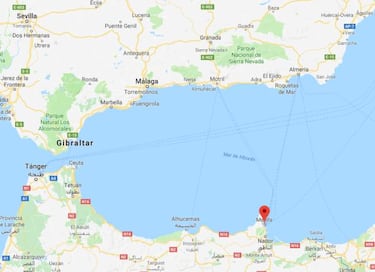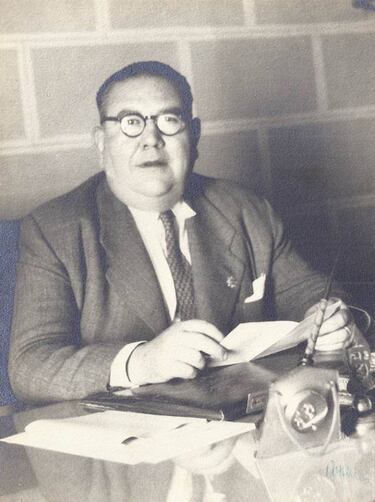Melilla: Real Madrid's Copa del Rey trip to Africa
Real Madrid face UD Melilla in the Spanish Copa del Rey on Wednesday, meaning they will be playing their first game of the post-Lopetegui era in Africa. But where is Melilla?


Santiago Hernán Solari makes his debut in the dugout as Real Madrid coach on Wednesday, just as the club itself does in the Estadio Álvarez Caro in the round of 32 in the Copa del Rey. For the first time in their history Real Madrid are playing UD Melilla, and that means they will be flying to Africa for their game on Wednesday evening, with kick-off at 19:30 in front of a sell-out crowd of 7,500 (including additional seating installed for the game). So why are Real Madrid playing a domestic game in Africa?
The story of Melilla - where is Melilla?
Melilla is a Spanish autonomous city state (2017 population 86,120) on the north coast of Africa in the Rif region, with the Mediterranean on one side, and a land border with Morocco on the other. It's been part of Spain since 1497, when it was invaded in the aftermath of the Christian reconquest of the Iberian peninsula, which ended in 1492.

Melilla was originally a Berber village, with the name coming from Tamlilt, meaning 'the white one' (possibly auguring well for Real Madrid on Wednesday night?). It became a Phoenician trading colony before, just like much of the Mediterranean basin, falling into Roman hands. The various civilisations that have held the city over the centuries have left a rich architectural and artistic heritage and the city sees members of all three faiths of the book, Christians, Muslims and Jews, intermingling peacefully, with the city celebrating the festivals of each faith.
Morocco demand sovereignty of Melilla
After Spain took Melilla the surrounding Kingdom of Fez immediately threatened the city with reconquest, and it has been besieged on several occasions over the years, without ever falling. The most recent hostilities occurring in 1893. Morocco continues to demand the return of the territory (along with the city of Ceuta and other islands and bits of land Spain holds in Africa), however Spain's position is that the city is an integral part of the Spanish state - rather than a colony - and that it's been part of Spain since the 15th century.
Furthermore Spain argues that the enclave was established before the creation of the Kingdom of Morocco - in other words, according to Spain, the matter is not up for debate. Morocco for their part maintain that Spain's territories on its coastline are a remnant of colonialism that must be ended. Note that Spain distinguishes the situation from that of Gibraltar, which is held by the UN to be a non-self-governing territory which should be subject to decolonisation, whereas Melilla is not on that list.
Melilla is not a big place. It's just 12.3 square kilometres in total, which means you could fit 2,300 football pitches into it (think the Nike Parklife advert ) It's not all about size, but as a comparison you could fit 113,000 football pitches into the city of Madrid.
Real Madrid's opponents: UD Melilla
Union Deportivo Melilla was founded in 1943 (though it disbanded 13 years later to be reformed in 1976) and plays in the Segunda B, Spain's third tier. They play at Estadio Municipal Álvarez Claro, which seats 12,000. The stadium is named in honour of Rafael Álvarez Claro, was mayor of Melilla and president of the club. In 1949 he saved the club from relegation to the regional leagues by managing to get an expansion of the Tmelhird Division.

Quick trip for Real Madrid to Melilla's stadium
Related stories
Melilla has an airport, meaning Real Madrid will be able to jet in before their game, with the stadium just a 5 minute drive from the Melilla stadium.

Coach of both Melilla and Real Madrid
There aren't many links between the two clubs but Juan Ramón López Caro has been coach of both sides, having been in charge of Melilla in 1997-98 (taking them to the Group IV title in the Segunda B) before taking over at Real Madrid Castilla in 2000 (where he oversaw the development of players such as Arbeloa, Mata, Javi García, Granero, Negredo...). When Vanderlei Luxemburgo was sacked in the 2005/06 season he took over a Real Madrid side in fifth place, guiding them to second in the league, but left at the end of that season to be replaced by Fabio Capello.